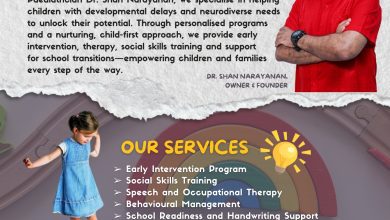Orthopaedic Health
Dr Suresh Siva Orthopaedic Surgeon
Recently while on call in Hospital Fatimah, I have been seeing many patients with fractures (broken bones) after minor falls. Most of these people have Osteoporosis, which predisposes them to these low-energy fractures, but sadly they are unaware of this potentially serious condition.
What is osteoporosis?
Osteoporosis is a disease of progressive bone loss associated with an increased risk of fractures. The term ‘osteoporosis’ literally means porous bone. The disease often develops unnoticed over many years, with no symptoms or discomfort until a fracture occurs.
Why should I be concerned about osteoporosis?
Osteoporosis is a major health problem and one in two women and one in four men older than 50 years will sustain bone fractures caused by osteoporosis. Many of these are painful fractures of the hip, spine, wrist, arm and leg, which often occur as a result of a fall.
However, performing even simple household tasks can result in a fracture of the spine if the bones have been weakened by osteoporosis.
The most serious osteoporotic fracture is a hip fracture. Most patients who experience a hip fracture and previously lived independently will require help from their family or home care. All patients who experience a hip fracture will require walking aids for several months, and nearly half will permanently need canes or walkers to move around their house or outdoors.


Doctors do not know the exact medical causes of osteoporosis, but they have identified many of the major factors that can lead to the disease.
Aging
Everyone loses bone with age. After 35 years of age, the body builds less new bone and in general, people lose 1% of bone mass per year. Therefore, the older you are, the lower your total bone mass and the greater your risk for osteoporosis.
Heredity
A family history of fractures; a small, slender body build; fair skin; and Caucasian or Asian ethnicity can increase the risk for osteoporosis. Heredity also may help explain why some people develop osteoporosis early in life.
Nutrition and Lifestyle
Poor nutrition, including a low calcium diet, low body weight, and a sedentary lifestyle have been linked to osteoporosis, as have smoking and excessive alcohol use.
Medications and Other Illnesses
Osteoporosis has been linked to the use of some medications, including steroids, and to other illnesses, like thyroid disease.
What can I do to prevent osteoporosis or stop it from getting worse?
The most important thing is to get some regular exercise and, additionally, in order to prevent osteoporosis, you should include adequate amounts of calcium and Vitamin D in your diet.
How is osteoporosis diagnosed?
The diagnosis of osteoporosis is usually made by your doctor with a complete medical history and physical examination, DEXA Scan, and specialised laboratory tests.
Bone densitometry or DEXA Scan is often performed in women at the time of menopause. If you are over the age of 55 you are strongly advised to be screened for osteoporosis.
How is osteoporosis treated?
Because lost bone cannot be replaced, treatment for osteoporosis focuses on the prevention of further bone loss. Although exercise and nutrition therapy are often key components of a treatment plan for osteoporosis, there are other treatments as well, including oral strontium which you take as a daily drink, hormone replacement therapy or other drugs which work to increase bone formation and reduce bone loss.


